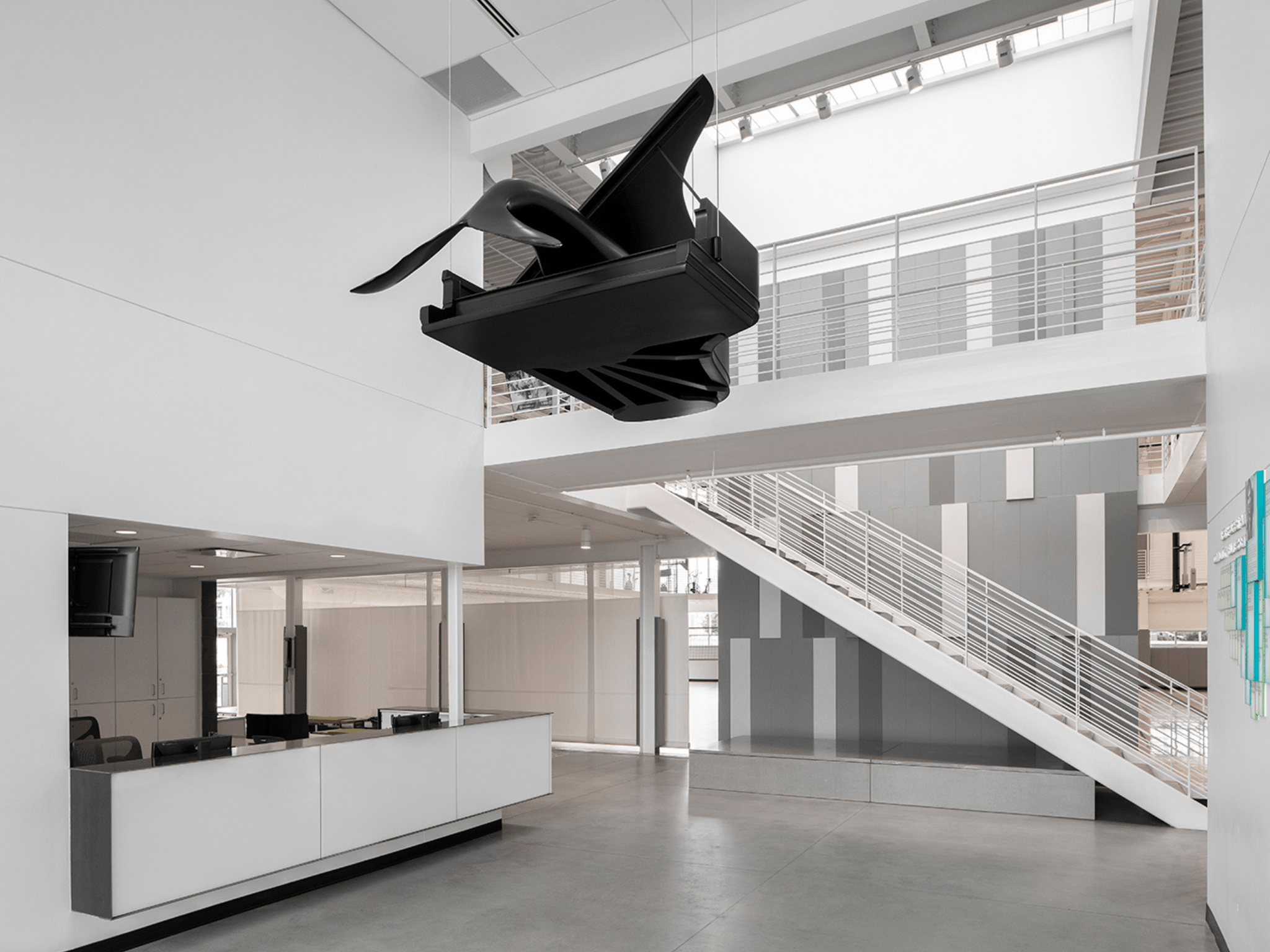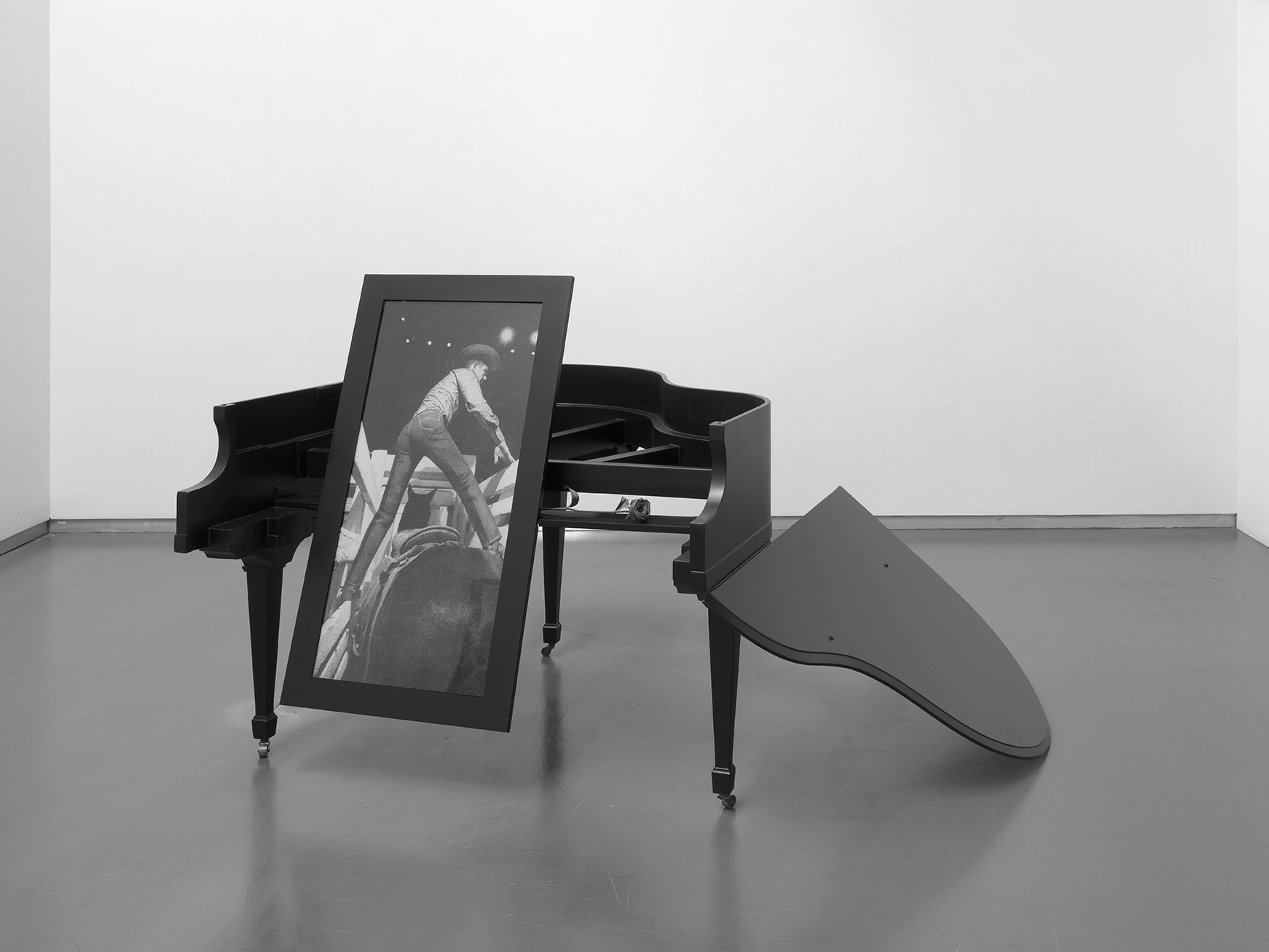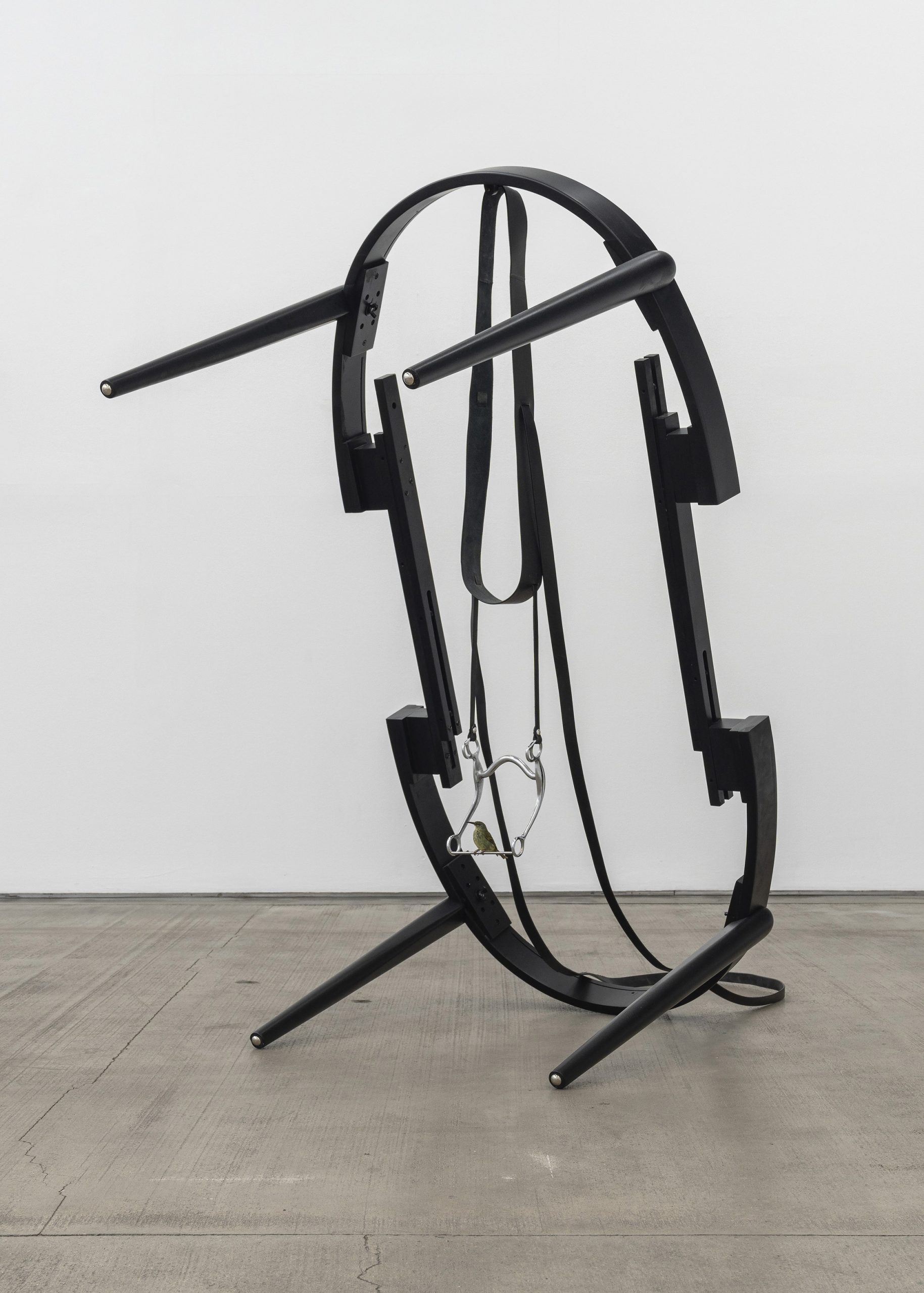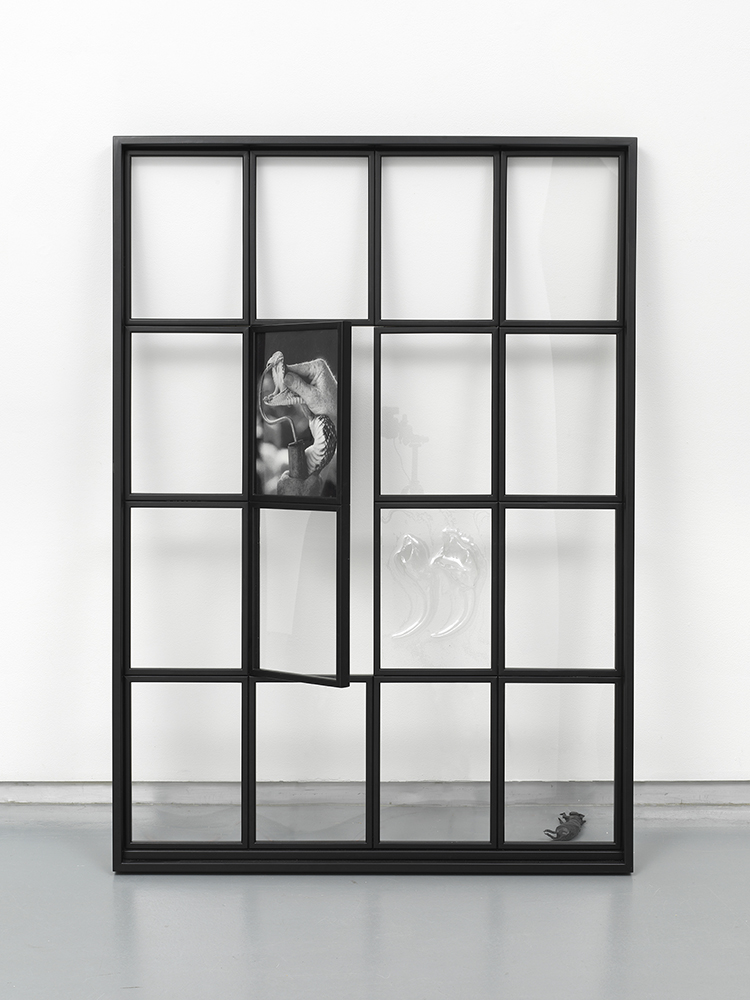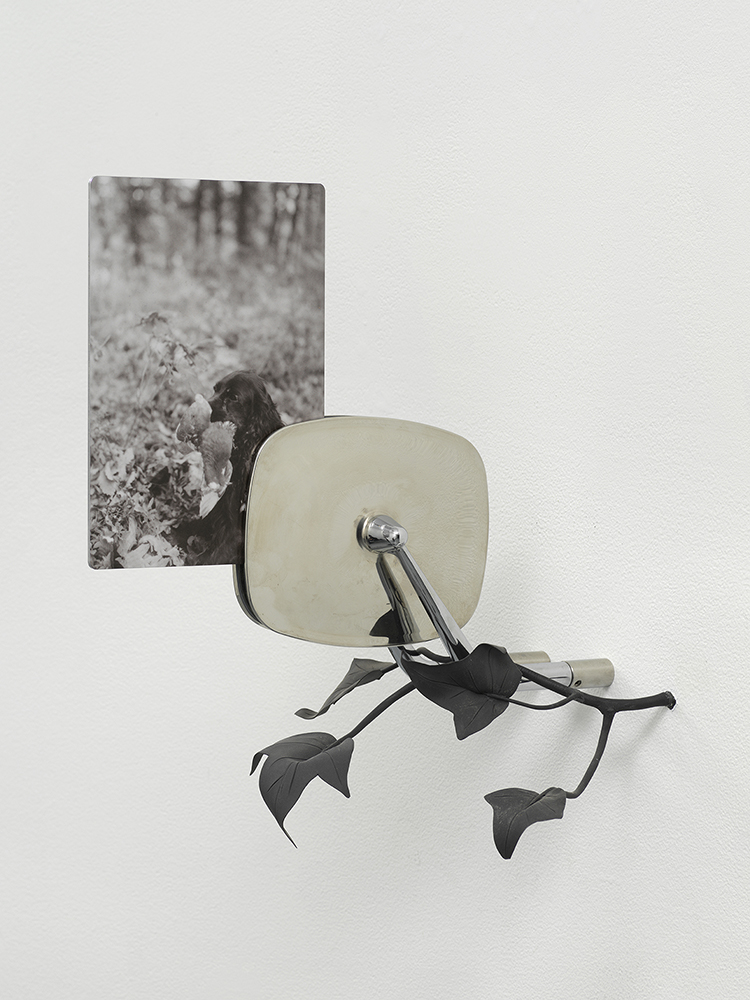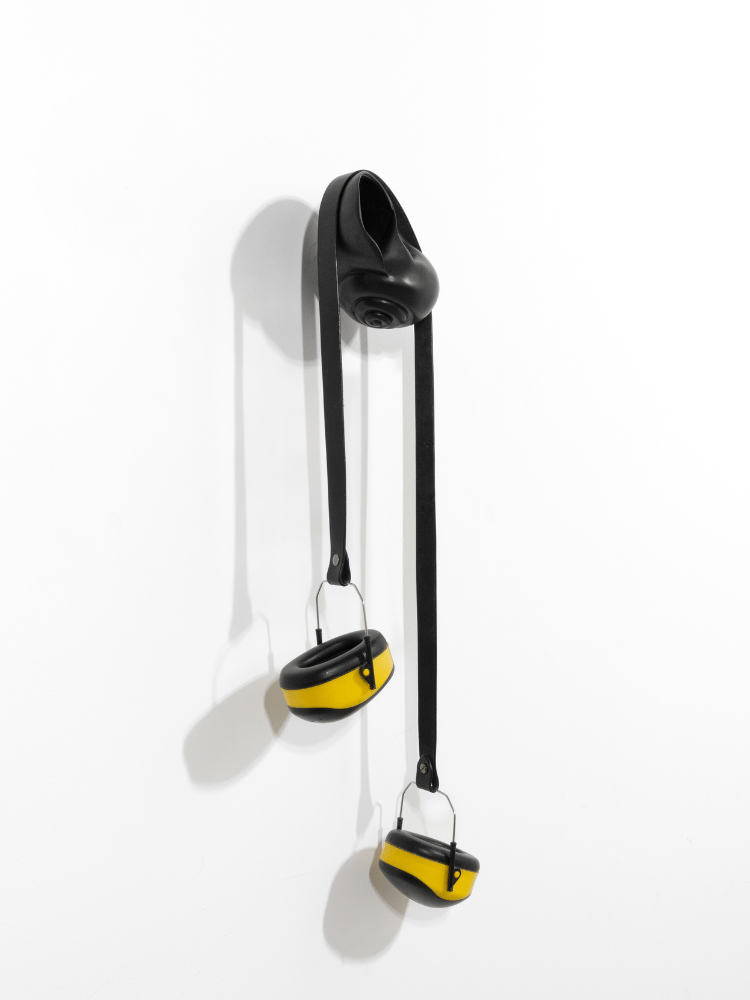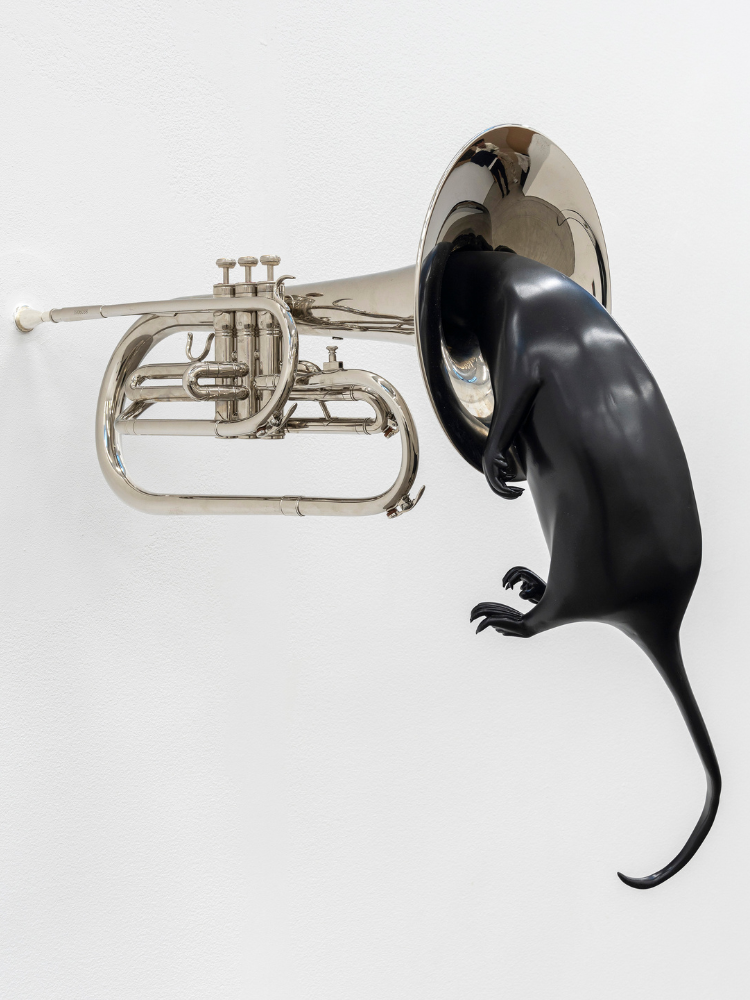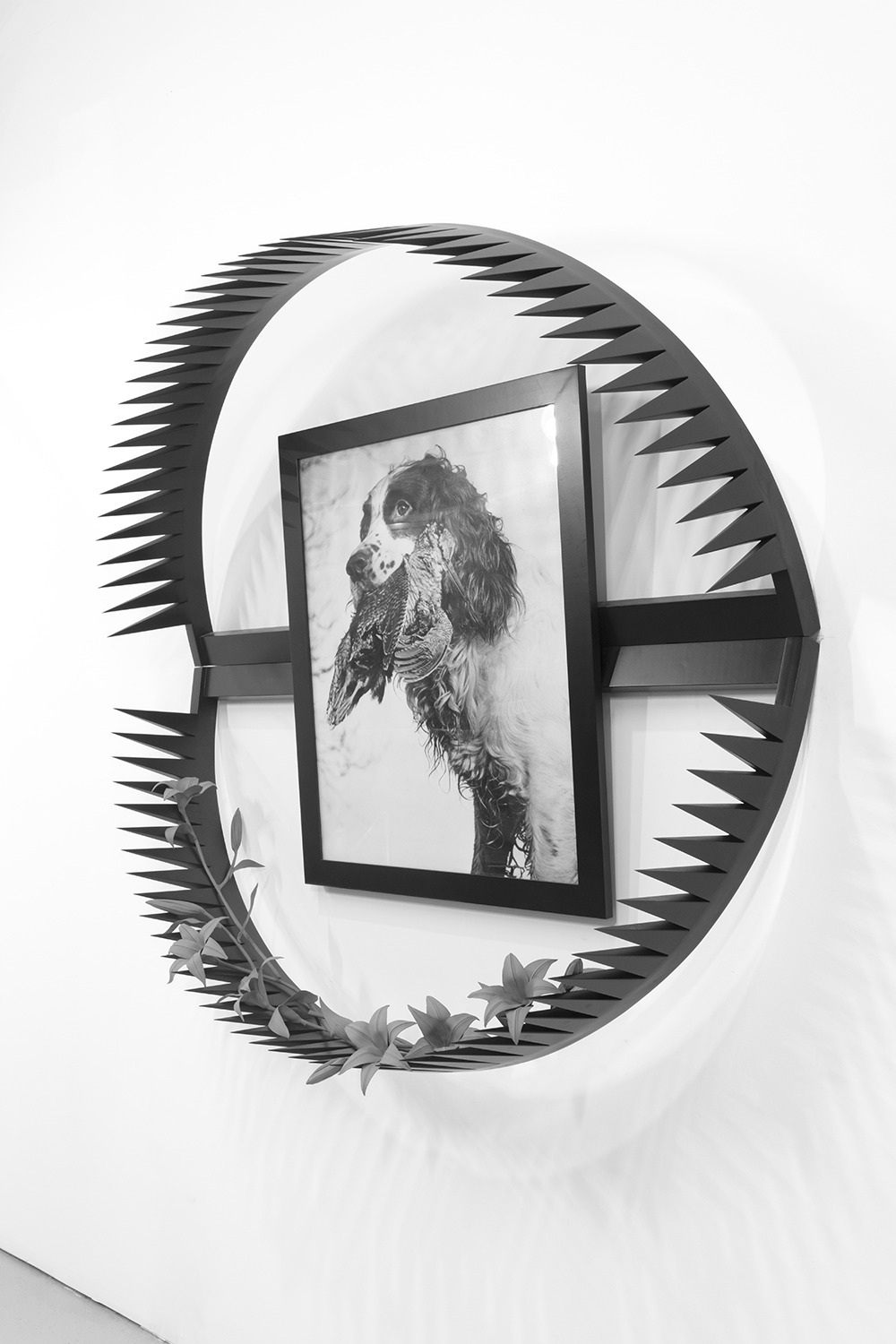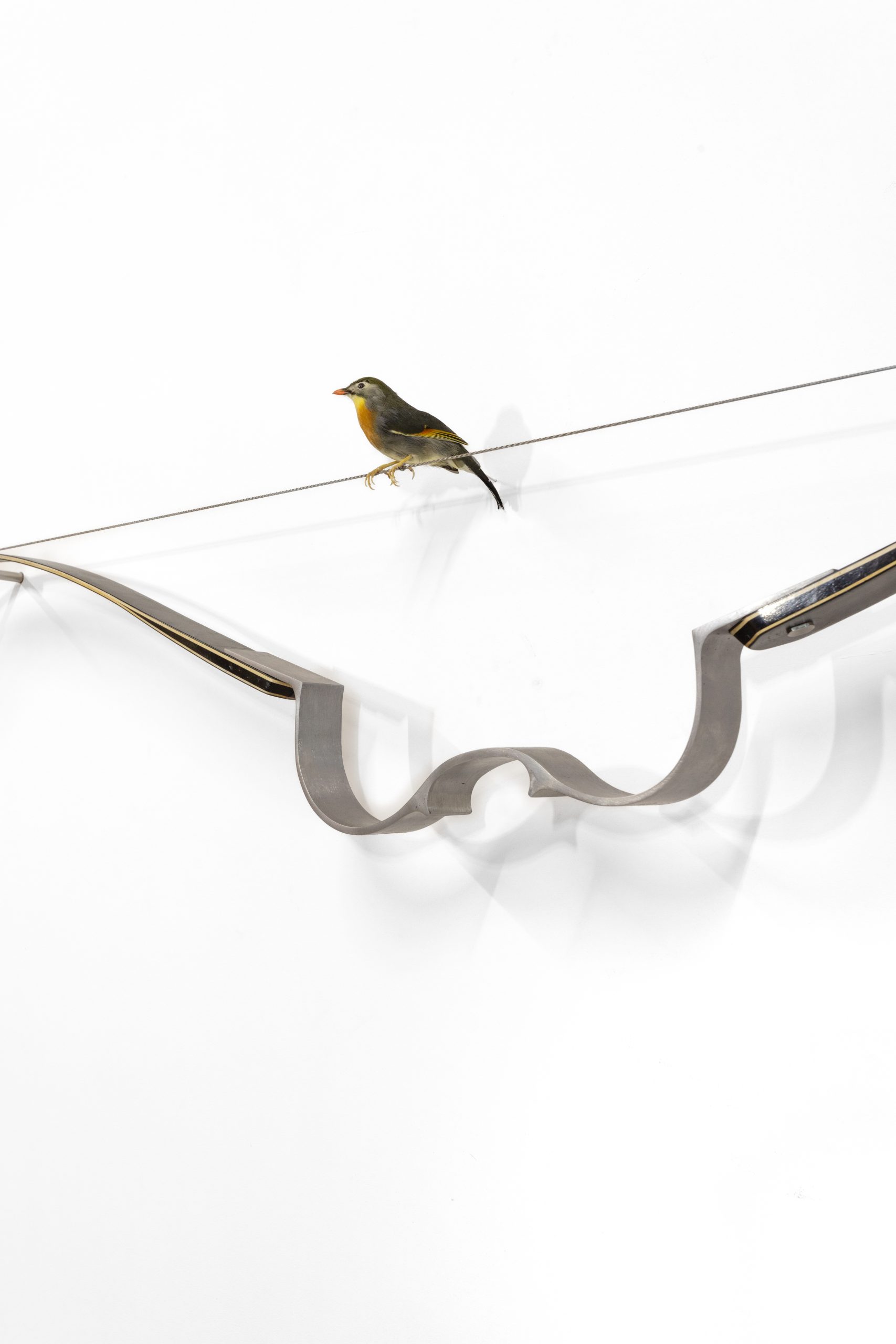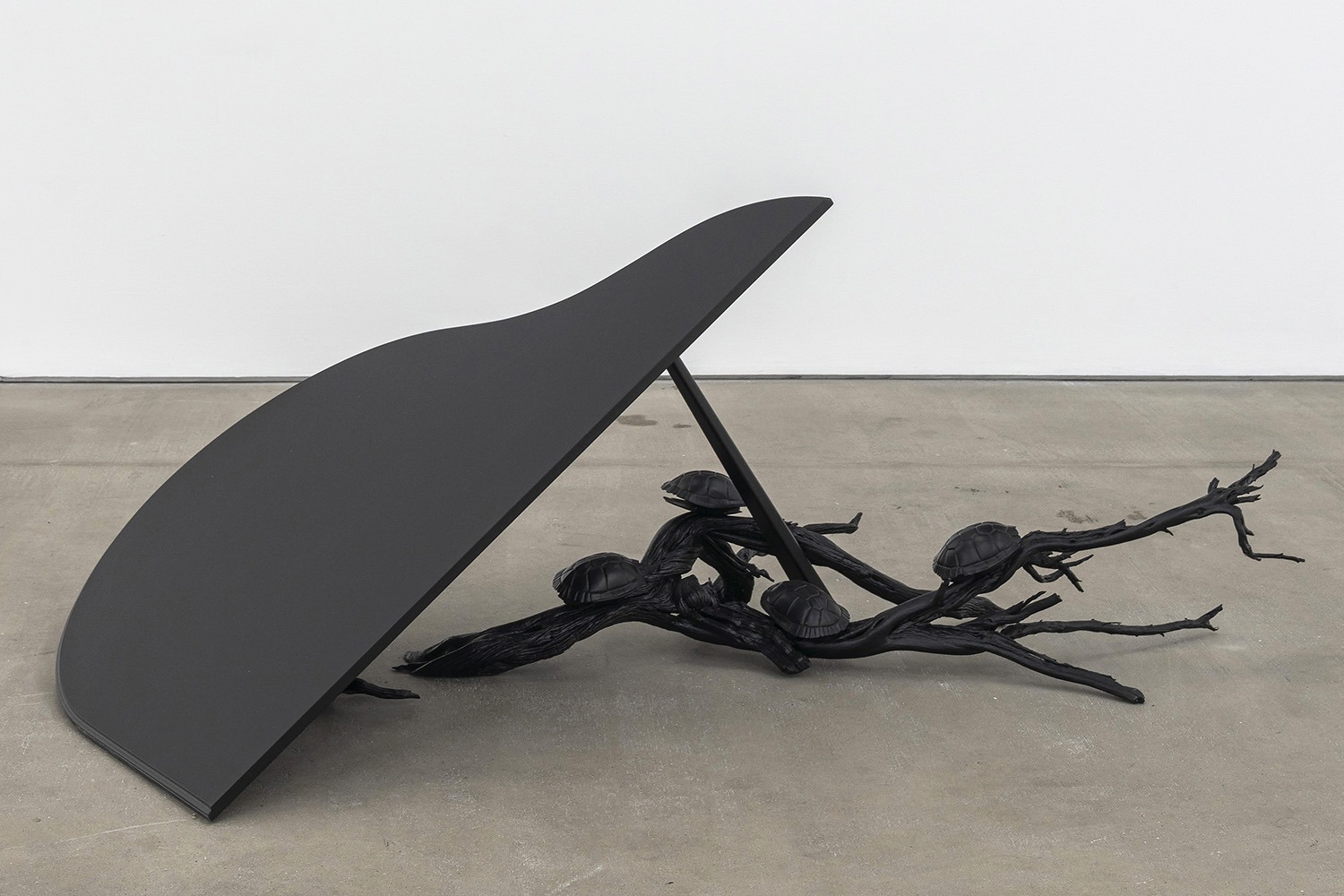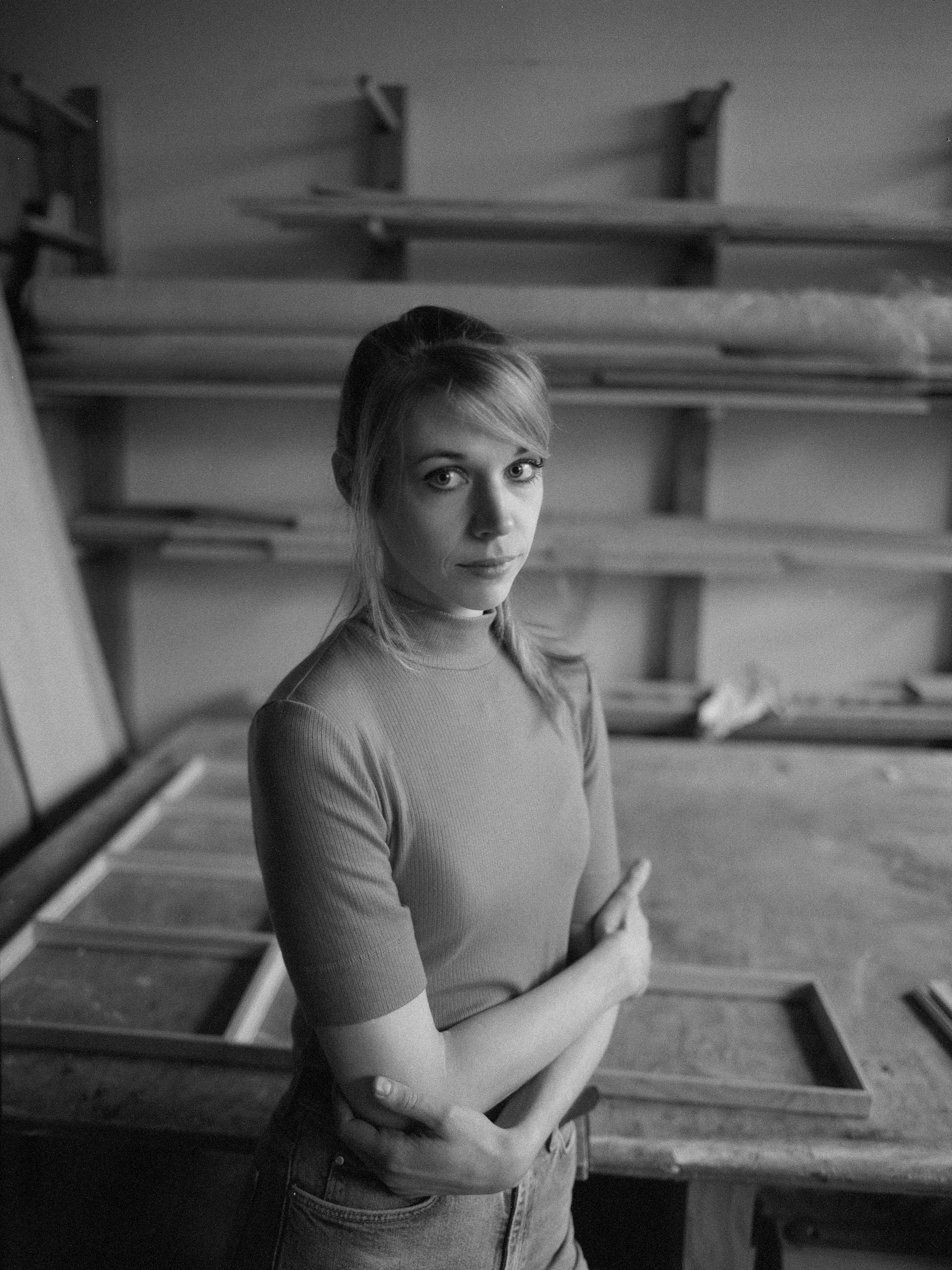
Where things happen #19— November 2023
There’s something mysterious in Christine Rebhuhn’s work.
Her austere monochromatic but extremely refined sculptural assemblages live in this limbo between their physical presence and their symbolic power, their materiality and the unconscious of the images they stage in the space.
The art of Christine Rebhuhn appears to deal with the most profound truths, which hide deep in our subconscious: the truth of our feelings and emotional recording we would like to never confront, but which inevitably emerge in more symbolic terms during altered states released from rational control and narration.
With her sculptural assemblages of found objects and masterfully hand carved compositions Rebhuhn eventually ends up into universal metaphors of the existential condition, staging a set of human dynamics she has experienced, or emphatically witnessed.
As she admits, her artistic practice became a way of working through them, slowly.
The artist’s hope is that, being able to externalize those things in physical forms, this can turn into an exercise to be a little bit more aware of them, and raise awareness for other people.
In this sense, they function also as simulacra and presages, that warn about something dangerous that is just about to happen, or already happened but should not repeat.
Applying some similar mechanism of Theatre of Absurd, the world that Rebhuhn presents seems incoherent, frightening and strange, but at the same time, it is hauntingly revelatory, both for its strangeness and familiarity.
The methodology and visual approach applied by Rebhuhn suddenly reveals how conventional linguistic and narrative tools can most often turn into a barrier, rather than means of communication. How language is most often a construct that fails in explaining and regulating human interaction and exchanges.
Her material compositions and poetic misalignment seem to already explore, instead, an alternative semiotic system that embrace a cryptic and dissonant symbolism: detached from their conventional meaning and use, objects turns into characters of a secret language thanks to the multiple associations they can intuitively activate during a process of decodification and resignification operated by the artist, as well as later by the viewer in approaching them with the load of one’s experiences.
In this sense, Rebhuhn’s material compositions seem to function more as the symbolic and aesthetic structures adopted since the early stage of civilization with myths and fables.
More specifically, echoing Lévi-Strauss structuralist theory of mythology, the art of Rebhuhn similarly turns into “language, functioning on an especially high level where meaning succeeds practically at ‘taking off’ from the linguistic ground on which it keeps rolling”.
In making reference to Lévi-Strauss’s theory on myths, it’s impossible to not observe how Rebhuhn also appear to perfectly reflect this loss he discussed as the origin of those narrations, namely when humans stopped to speak with animals: animals in mythological narratives rather turned therefore into powerful personifications of human behaviors, used as linguistic tools to symbolically allude to more instinctive responses and attitudes that directly depend on the strategies of survivals, and often escape the control of any moral and ethic civilized code: in these natural responses, however, lies a primordial nature of the self, deprived already from all the veils of sublimation or control.
Similarly, Rebhuhn seems to choose very specific birds and animals in her works, that reflect more instinctive behaviors and responses often suppressed in human civilized actions, but that might emerge in situations of danger and attack, making more clear how those dynamics still persist also with human relations, as they do in nature.
Rebhuhn, however, proves to be very self-conscious of over-exposing her works with too many stories or explanations accompanying them, understanding the importance of a“reasonable amount of mystery” they must hold, to stand powerful metaphors.
In this process black is also a key element, which is what allows the artist to achieve this shapeshifting: in all the objects she uses there are so many connotations, as their life journey proves. One shape can be so many things, but the darkness adds another layer too, fully extracting them from their mundane essence, completed by the apparently no-sense pairing of elements that eventually always finds a highly precise formal order.
In doing this, Rebhuhn’ process seems to echo again Lévi-Strauss when he explains how in the structure of myths “meaning is not isolated within the specific fundamental parts of the myth, but rather within the composition of these parts. Although myth and language are of similar categories, language functions differently in myth. The foundation of structuralism is based upon an innate understanding of the scientific process, which seeks to break down complex phenomena into its component parts and then analyze the relations between them”
Following a similar approach of appropriating material symbols and then reassembling and reassembling in a new code, Rebhuhn most often embarks also in a obstinate operation of almost obsessive domestication of the objects and material in the extremely labor intensive elaboration that she decides to operate on them, as by hand carving the wood.
This appears almost a masochist process of control and self imposed discipline, that becomes a tool of both healing and exercising something rooted in the psyche, eventually emerging in the works.
Nevertheless, her concoctions are never completely detached from reality: as she explains, objects often come to her, as the ideas for her works, bringing along a series of stories and meanings they’ve accumulated and can activate a new circle of use and ownership.
In this sense, the artist’s process of conceiving and assembling these sculptures, also becomes a tool for the artist to test a system of interdependence between people, and how relations are directed and driven by a system of exchange of commodities.
Her sculptures are most often the result of a human journey that takes her from carefully selecting them to buying them from people and modifying them with artisan collaborations.
However, she elects to preserve the secrecy of these histories, denying any association with any explicit narration or story: they’re rather presented as symbols in the space, metaphors open to resonate with the different subconscious associations the viewers that will encounter them holding already in their gaze as series of individual and collective memories that will influence the final meaning.
In this way the work of Rebhuhn eventually directly tackles what regulates the relations between language, culture and experience, as all embedded in wider conventional structures.
However, abstracting those objects from both their conventional material and symbolic order and placing them a subtle rhetoric of randomantic encounters and tensions between opposites, Rebhuhn also seems to be following a sort of “Savaged Mind“, meaning an” ‘untamed’ human thought distinct from mind cultivated” which allows her to escape any conventional and rational level of reality.
Other times, however, Rebhuhn decides to make these metaphors so clear and direct, to appear dull: animals and objects are cleverly combined in their physical, symbolic and linguistic stand, to become witnesses of an ongoing human drama, clear signs of an externalized shared trauma.
For instance the artist has used canaries many times, and she admits, she feels like there’s something about that bird that’s so loaded that it almost feels kind of off limits: too direct, about what it means, both in its physical appearance and linguistic associations to its English name.
Her witty assemblages contemplate a more complex simultaneous combination of linguistic meaning and associations, materials misalignments, and psychological activators, that oftentimes titling the works with directives succeeds in creating engaging loops between different senses and orders of reality.
Often elegiac in their tone, severe in their chromatic choices and presence, her works could be seen as relics of a civilization where people and objects already have lost their purpose, or the correlation of sense.
In them, animals substitute humans as in the fables, to turn into universal signs and symptoms of their today too polarized psychological status and qualities.
Characters, setting, events and moral are encapsulated in austere simulacra, that extend their presence well beyond their exterior appearance as a concrete stage, presenting a drama that consists in a condition of always being suspended in a complex and often conflicting physical reality.
Ultimately, Rebhuhn’s inventive assemblages of opposites invite us to embrace the complexity of an inescapable multilayering and pluralism of visions and values that characterize our experience of the world: the reality of human minds and relational dynamics is rarely divided between two clear opposites, between a black and white, a victim and a handsman, but its is rather made of a multilayering of experiences and interpretation and expression.






















